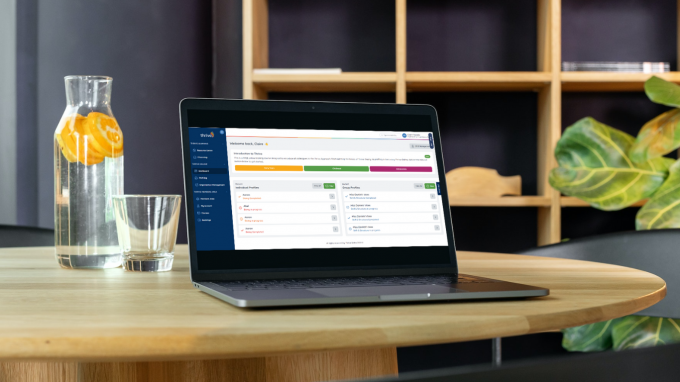We've gathered 40 tried-and-tested inclusive classroom tips shared by educators, SENCOs, and Thrive Practitioners. From empowering pupils with agency over their learning to fostering empathy, this collection offers practical insights to create a supportive and enriching environment for all learners, embracing diversity and promoting inclusive education. Let's dive into the collective expertise of our community and discover valuable strategies for building truly inclusive classrooms.
-
Give pupils agency over their learning. Moving from a teacher-led lesson to a pupil-led lesson so the pupils have a choice over how they present their learning. Adapting the learning so that all can access the same lesson content, moving away from differentiation. This way pupils with SEN do not feel different or feel that they always do different work to everyone else. It also means that there is then no ceiling on their learning, which is a danger when relying on differentiation. SENCO, Cherry Orchard Primary
-
Allow children to be themselves. No matter what they may present as, accepting them, inviting them and allowing them to grow at their own pace with a trusted sense of belonging is the key to the success of many children, not just SEN. Jess Jeffery. Westlands Primary school
-
Stop thinking rigidly about what a classroom should look like. Instead, what does it feel like for each child? Can each child participate, is it inviting, engaging and child-centred? Are you meeting children where they are? Is play used at all stages? Anon
-
Create and model relationships built on trust and empathy. Where all adults and children feel seen, heard and understood. SEND governor, Widmer End School
-
Look at the needs of your children with SEND and make those adaptations common practice. The more open and accessible they are, the more likely the children who need to access them will be able to use them. Jade Attwood. Thrive Practitioner, SENCO and Class teacher, Oak Hill C of E Primary School
-
Consider sensory needs that could be being 'masked'. Use visual aids wherever possible and consider background noise. Musical cues and 'movement breaks' can be really effective. Remember that sensory overload and unpredictability in the classroom can have a huge impact on anxiety levels. Matt Henderson. Assistant Headteacher, Kingsweston School
-
Be genuinely interested in your pupils. Adopt a whole school ethos regarding SEND and have a common language and approach. Don’t put a ceiling on anyone. It’s just a difference, it doesn’t mean they can’t achieve. Anon.
-
Use reassuring language. Ensure that language used is reassuring rather than demanding so anxiety is not heightened unnecessarily. Barbara Cooper. Thrive Practitioner, Old Bank Academy
-
Share stories, views and experiences. Validate, discuss and enjoy the differences as a whole classroom. Sam La Roche. Thrive Licensed Practitioner, Ysgol Clywedog, Wrexham
-
Give every child a role or responsibility in the class. For example sorting pencils to involve them, recognising that all can contribute, no matter how small. Everyone is important and valued. Ex-TA and parent of SEN children
-
Allow time for revisiting learning alongside reflection on their progress. Give time for analyses, feedback and ways in which children can move their learning forward. Develop peer feedback where every child's comments are acknowledged and used to improve work. Lisa Osborne. Head of year 5 & class teacher, Mission Grove Primary
-
Celebrate successes; even the smallest ones. Ensure a soft start to lessons. Welcome all students, and ask questions about their interests to show you care. When starting tasks use positive language and encouragement throughout. Be consistent with all students around expectations. Chris Dixon. Lead ASD Teacher, Acklam Grange School
- Make sure the learning environment is calm, purposeful and not overstimulating. Ensure you have resources readily available like ear defenders, kick bands and fidget toys. Hannah Dickinson. Deputy Head, Kippax Ash Tree Primary School
- Make it commonplace to celebrate how unique and different we all are. Hold assemblies that teach the children about different abilities, the more aware they are the more understanding they can be. Jade Attwood. Thrive Practitioner, SENCO and Class teacher, Oak Hill C of E Primary School
- Have teachers imagine what it is like to be that child. Paint the picture for them as much as possible about what it is like when they wake up, what food is available, who is affectionate towards them, what emotional state they are in by the time they arrive at school, how ready (or not) they are to be able to learn, what they will face when they go home, etc. Clare Hollingsworth. SENCO, Withycombe Raleigh C of E Primary
- Develop a daily routine that allows opportunities to listen to all children. Provide support for children in the class to become active learners. Using visual prompts and sentence starters to allow children independence in (differentiated) tasks that are set. Lisa Osborne. Head of year 5 & class teacher, Mission Grove Primary
- Be kind! Show empathy and compassion - to all students. Patience, realising that you are the adult in the room and the students struggling are still learning how to be adults. Anon
- Provide predictability via routines and visuals. Trauma-informed, communication friendly, positive relationships and consistent key adults. Children taking ownership of how they learn and developing independence via well-planned structures within the classroom. Danni Mitchell. Deputy Head/SEN Manager, New Moston Primary School Manchester
- Allow time and capacity for relationship building for children with SEND. It's the foundation of every intervention, as it affords an integral and vital understanding of individual needs. Without this fundamental step, countless hours are wasted on ineffective and sometimes damaging interventions and worse, children are often left traumatised and in need of additional support. Russ Tully. Specialist Practitioner, Children's Community Support Team, Bradford
- Adapt to each individual’s needs. Be willing to change your activities at the drop of a hat to suit the child’s situation. Adele. Lead Behaviour Mentor, Leicester City Primary PRU
- Begin by considering the child's current position and their interests. Integrate movement breaks, fidget toys, wobble cushions, and similar elements for all children to explore consistently throughout each day. What works well for children with SEND is good practice for all children. Anon
- If you build good relationships with the children you work with, it does not matter where your classroom is or what it looks like. The people in it and how they are treated reflect the school practices and inclusivity. Pierre. Forest School Leader
- Try to think about all learning experiences from the point of view of the child. Appreciate their specific needs and ensure that all children can achieve in every lesson at their point of learning. Anon
- Staff should be offered regular supervision to challenge unconscious bias and to be supported to reflect on their practice. Students to be offered regular opportunities to engage in difficult conversations about ‘taboo’ topics. Dee. CEO, Autism Champions
- Consider the environment from the perspectives of your learners. This will help you to identify whether they can feel enabled, represented and valued with a sense of belonging. Amanda Burton Smith
- Allow take-up time. Some children process differently to others and receiving oral information and wanting a written response can be a difficult transition. Nicky Cooper-Burrows. Class teacher, Special School
- Have a safe space accessible for all. Give pupils access to required equipment as appropriate like ear defenders, sensory tools, wobble cushions and writing slopes. Anon
- Have a schedule at the front to depict what is happening during the day so the lessons are predictable. Have Now and Next boards visible to those children who need them and clear verbal instructions with regular breaks for regulation and motivation. Jenni Brockbank. TA and Thrive Practitioner, Sandside Lodge School
- Make the room feel less like a classroom. Use soft furnishings and seating areas. Also, a place to make drinks and snacks. We do have a table and chairs where students can do crafts but also an alternative to give choices and reduce the pressure. We have a 'den' where children can go if they don't want to talk and engage, and this is respected by staff. Anon
- Get rid of all the clutter on the tables and walls. Calm, clean lines work wonders for all of us. Sara Capaldi. DSL
- Provide areas for both calm and high-sensory input. This addresses the needs of children who seek sensory stimulation. While quiet spaces are commonly catered to, it's crucial to accommodate those who thrive on sensory input. Jade Attwood. Thrive Practitioner, SENCO and Class teacher, Oak Hill C of E Primary School
- Greet every child as a fresh day no matter what has happened the previous day. Prioritise meeting their sensory needs, whether it's through activities like using a wobble cushion or playing with a squidgy. Use visual aids, such as timetables and lesson plans, to provide structure and support throughout the day. Incorporate sensory breaks and task boards to communicate expectations clearly. Establish quieter areas for children to retreat to when feeling overstimulated. Foster a supportive environment by building rapport and trust with each child. Mandy McCorry. Assistant SENCO
- Design a poster collaboratively. Involve children and staff in designing a poster/guidance on how to make the class welcoming to all. Consider Involving parents - often the divisive attitudes stem from home. Kate Whiteley. Headteacher
- Make connections, know your students, know their needs and listen to them! Through transition information, family view, student view, data - we create a Passport for many of our SEND students (and students who might need a bit more monitoring as identified by staff during transition week), and staff add their observations to this throughout their time at the college. Phillippa Ryder. Head of Sixth Form, UTC Portsmouth
- Increase the number of specific learning support assistants (LSAs) to support children with SEN. LSAs are available to students in both the primary and secondary classrooms so that pupils don't have to be taken out of the class for support lessons. Many SEN students don't have problems with the actual content of the lesson, they have weak executive functioning skills that impact their working memory, cognitive flexibility and inhibition control. They need the opportunity to be taught specific EF skills so they can remain in the classroom alongside their neuro-typical peers to learn. Faye Aspill. Independent Educational Consultant, Educational Advisory Team
- Ensure that each pupil has their own Independent Learning Plan (ILP). An ILP identifies items or strategies that support them (regardless of their 'diagnosis') and that these are in all classrooms. It is important that these items/strategies can be accessed as soon as possible to encourage self-regulation. Anon
- Ensure all staff understand the complexities of children within the school. Develop an ethos where team teaching and shared SEND resources are common practice. Staff share their understanding and strategies to support all children. Understand where the need for training is within the school and address these needs accordingly. Lisa Osborne. Head of year 5 & class teacher, Mission Grove Primary
- Don't be afraid to try things and remember it might not work the first time. Some children need something to happen multiple times before they embed it. Remember that all behaviour is communication - try to understand it before disciplining it. We have the same expectations for all children but the success criteria is different. Anon
- Look at what every child can do first. They might not be able to re-write the story but they can tell you the story, they can re-order the sequence, they can listen to the audio - Always work from what they can do first. Amanda Campbell. Head teacher, Kippax Ash Tree Primary
-
Define clear minimum standards for behaviour. Enforce those standards consistently and deal with low-level disruption in a sensitive way. Dawn lambert. SEMH HLTA, Monteagle primary school
Over to you
Click here to schedule a Discovery Call with your regional expert to find out how Thrive could help your setting manage behaviour and support staff. Designed to fit in around your schedule, these free 30-minute conversations via Teams give you a chance to have your questions answered and decide if our service is a fit for your needs.
Pass it on
Small actions can lead to a big ripple effect. If you enjoyed this post or found it helpful, please consider supporting us in our mission to help every child and young person feel safe, supported and ready to learn by sharing it using the social media buttons below.
Want to join a like-minded community of senior leaders and classroom staff benefitting from insights and strategies to improve attendance, behaviour and attainment? Add your email address below. (It’s easy to unsubscribe).

(1)_680.jpg)


(2)_680.png)

